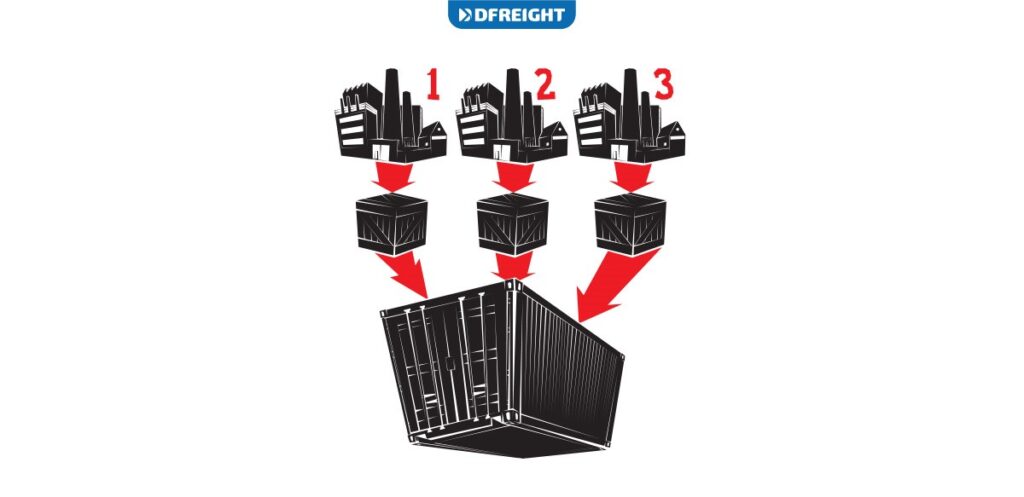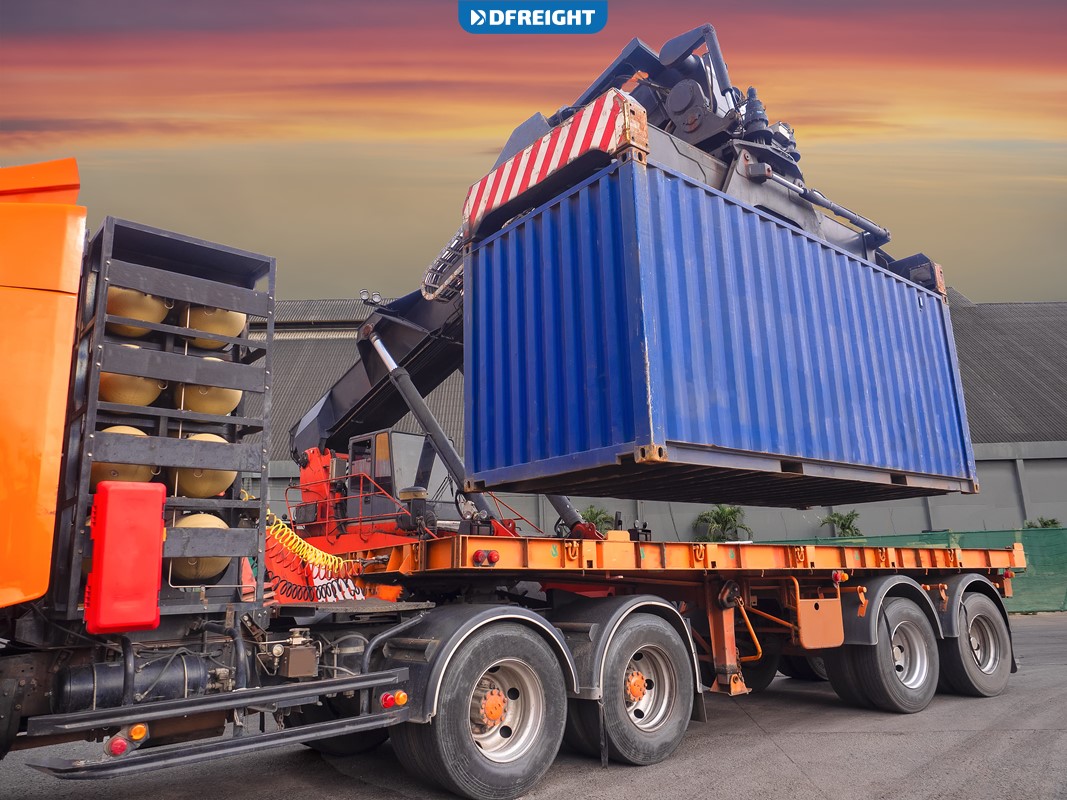LCL shipments are consolidated with other shipments bound for the same destination and are loaded into a shared container. This type of shipment is often used for smaller consignments or consignments that are not of uniform size or shape.
If you are shipping goods that are not packed into a full container, you may be able to save money by shipping an LCL shipment. LCL shipments are often less expensive than shipping a full container.
This article will explain the process of shipping LCL shipments and How to prepare LCL shipments for a smooth transition.
Table of Contents
What Is LCL Shipping and How Does It Work?
Less than container load (LCL) is a shipping method for goods that do not fill an entire container. LCL shipping is popular for small shipments because it is a cost-effective alternative to airfreight or full container load (FCL) shipping. LCL shipping works by consolidating multiple small shipments into one larger shipment. This consolidation process is known as “lumping.” Once the shipments are lumped together, they are loaded into a container and shipped to the destination.
At the destination, the container is unloaded, and the individual shipments are sorted and delivered to their respective consignees. LCL shipping is a good option for small businesses with insufficient goods to fill an entire container. It is also a good option for companies that want to save money on shipping costs.

The Benefits of LCL Shipping
There are many benefits to LCL shipment, including the following:
- LCL shipment is often less expensive than shipping by air or sea.
- LCL shipment is often faster than shipping by air or sea.
- LCL shipment allows for the shipment of smaller quantities of goods.
- LCL shipment is often more convenient than shipping by air or sea.
- LCL shipment allows for the shipment of goods that are not perishable.
- LCL shipment is often more reliable than shipping by air or sea.
- LCL shipment is often more flexible than shipping by air or sea.
- LCL shipment allows for the shipment of goods that are not fragile.
- LCL shipment is often more punctual than shipping by air or sea.
The Drawbacks of LCL Shipping
There are several drawbacks to LCL shipments, including:
- There is a greater risk of damage or loss, as cargo is handled multiple times during the consolidation process.
- Delivery times can be longer, as LCL shipments must be routed through a consolidation warehouse before being forwarded to the final destination.
- There is less flexibility in terms of routing and transit times, as LCL shipments need to be coordinated with the schedules of other shippers.
- There is less control over cargo handling, as shippers must rely on the consolidation warehouse to properly pack and load the container.
- There is a greater risk of delays, as LCL shipments are often subject to delays in the consolidation process.
- There is a greater risk of cargo being lost in transit, as LCL shipments are often routed through multiple warehouses and terminals.
How to Prepare Your LCL Shipment for a Smooth Transition
How to prepare your LCL shipment for a smooth transition
When shipping LCL, it is important to properly secure your shipment and ensure all items are correctly labeled. Follow these tips to ensure a smooth transition for your LCL shipment:
- Choose the Correct Type of Packaging
When shipping LCL, choosing the right type of packaging for your shipment is essential. Depending on the type of goods you are shipping, you may need to use different types of packaging, such as boxes, pallets, or crates. Be sure to choose strong packaging to protect your goods during transit.
- Secure Your Shipment
Once you have chosen the correct type of packaging, it is essential to secure your shipment correctly. Be sure to use strong packing tape to seal all boxes and crates. You may also need pallet straps or shrink wrap to ensure your shipment.
- Label Your Shipment
Be sure to clearly label your shipment with your name, address, and contact information. You should also include a list of the contents of your shipment. This will help the shipping company properly handle your shipment.
- Choose the Right Shipping Company
When shipping LCL, it is essential to choose a reputable shipping company. Be sure to research different shipping companies to find one that offers your needed services.
- Schedule Your Shipment
Once you have chosen a shipping company, schedule your shipment in advance. This will help ensure that your shipment arrives on time.
- Track Your Shipment
Be sure to track your shipment to stay up-to-date on its whereabouts. This will help you resolve any issues that may arise during transit.
Following these tips can help ensure a smooth transition for your LCL shipment.
The Importance of Proper Packing
When you are shipping Less than Container Load (LCL) cargo, it is essential to take the time to pack your shipment correctly. This will help to ensure a smooth transition for your freight as it moves through the shipping process. LCL cargo is typically shipped in barrels, boxes, or on pallets. These items can be shipped loose, but it is essential to ensure they are properly secured, so they do not shift during transit. This can be done using packing material such as bubble wrap, foam, or even peanuts.
It is also important to clearly label all of your boxes and barrels. This will help to ensure that your cargo is sorted correctly and routed during transit. Be sure to include your contact information on the labels so the receiving party can quickly get in touch with you if there are any questions or problems. By taking the time to pack and label your LCL shipment properly, you can help to ensure a smooth transition for your cargo. This will help avoid delays and problems during transit and ultimately help ensure successful delivery.
Tips for Packing Your LCL Shipment
- Label each box with your name, address, and contact information.
- Pack heavier items on the bottom and lighter items on top.
- Use packing peanuts, bubble wrap, or other packing material to fill any empty spaces in the box.
- Make sure the box is securely closed and taped shut.
- Write “FRAGILE” on any boxes containing breakable items.
- Take a photo of your packed boxes before sealing them up.
- Keep a list of what is in each box if you need to reference it later.
- If possible, ship your boxes on a pallet to make them easier to handle.
- Make sure your boxes are correctly labeled with your destination address.
- Double-check that your contact information is correct before sending your shipment off.
Conclusion
LCL shipments are often overlooked by businesses when choosing a shipping method, but they offer many advantages. LCL shipment is an excellent option for those who transition their belongings smoothly. It is important to remember to pack your items appropriately and label them correctly. LCL shipment is a perfect option for those looking for a hassle-free way to move their belongings.
DFreight is a leading provider of LCL shipping services, and we invite you to work with us to take advantage of all that LCL shipping has to offer. Our team of experts can help you choose the suitable shipping solution for your business. Contact us today to learn more about our LCL shipping services.
FAQs
What are some things I should avoid doing when shipping LCL?
You should avoid doing the following when shipping LCL:
-Packing your goods too tightly. This can damage the goods and make them difficult to unload.
-Packing your goods in an unsuitable container. This can also damage the goods and make them difficult to unload.
-Not labeling your boxes correctly. This can cause confusion and delays when your shipment arrives.
-Not including all the required documentation. This can also cause delays when your shipment arrives.
What are some things I should make sure to do when shipping LCL?
You should make sure to do the following when shipping LCL:
-Pack your goods securely, but not too tightly.
-Pack your goods in a suitable container.
-Label your boxes correctly.
-Include all the required documentation.
-Choose a reputable shipping company.
What should I do if I have questions or need assistance with my LCL shipment?
Contact your chosen shipping company if you have questions or need assistance with your LCL shipment. They will be able to provide you with the information and service you need.













